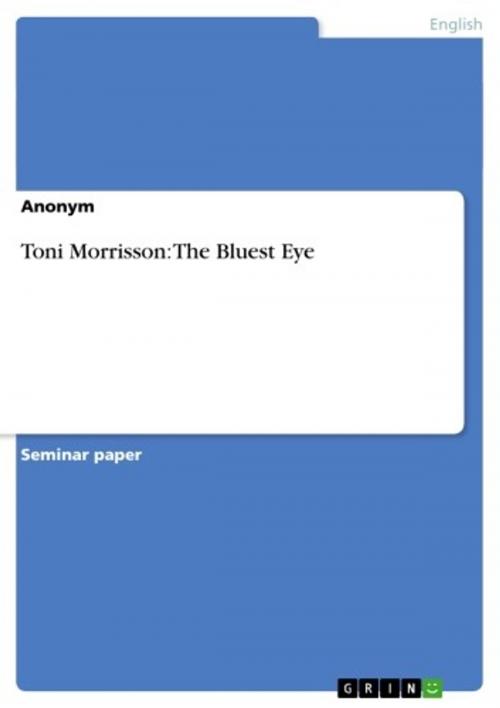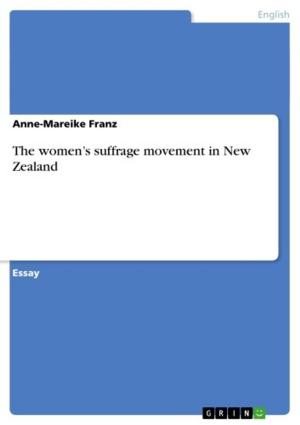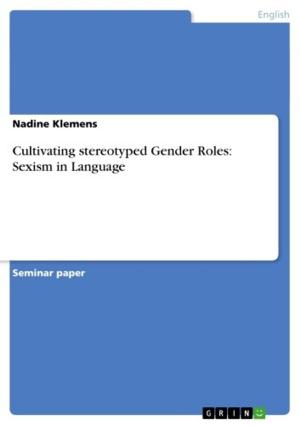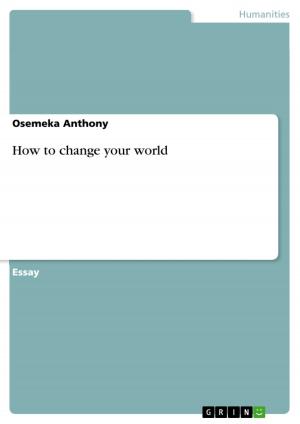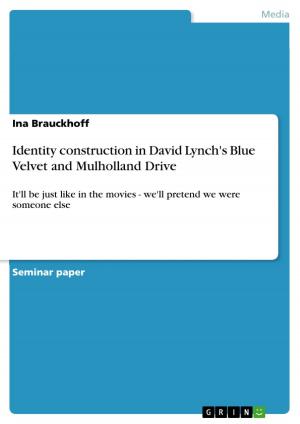| Author: | Anonymous | ISBN: | 9783638266024 |
| Publisher: | GRIN Publishing | Publication: | April 7, 2004 |
| Imprint: | GRIN Publishing | Language: | English |
| Author: | Anonymous |
| ISBN: | 9783638266024 |
| Publisher: | GRIN Publishing |
| Publication: | April 7, 2004 |
| Imprint: | GRIN Publishing |
| Language: | English |
Seminar paper from the year 2003 in the subject American Studies - Literature, grade: 1 (A), Southern Connecticut State University (English Department), language: English, abstract: 'The Bluest Eye' is Toni Morrison's first novel and was published in 1970. Toni Morrison uses modernist techniques of stream-of-consciousness, multiple perspectives, and deliberate fragmentation. Two different narrators tell the story. The first is Claudia MacTeer, who narrates in a mixture of a child's and an adult's perspectives, and the second is an omniscient narrator. Claudia's and Pecola's points of view are dominant, but the reader also sees things from other character's points of view. The subtext of the first part of the novel ('Autumn' and 'Winter') suggests various topics. In my presentation, I mainly focus on the 'Dick and Jane narrative' by means of which the novel opens. Furthermore, I will explore the themes 'whiteness as the standard of beauty' and 'seeing versus being seen' which are sometimes closely connected. 'The Bluest Eye' provides an extended depiction of the ways in which internalized white beauty standards deform the lives of black girls and women. Implicit messages that whiteness is superior are everywhere, including the white baby doll given to Claudia, the idealization of Shirley Temple, the consensus that light-skinned Maureen is cuter than the other black girls, and the idealization of white beauty in the movies. Pecola eventually desires blue eyes in order to conform with these white beauty standards imposed on her. However, by wishing for blue eyes, Pecola indicates that she wishes to see things differently as much as she wishes to be seen differently.
Seminar paper from the year 2003 in the subject American Studies - Literature, grade: 1 (A), Southern Connecticut State University (English Department), language: English, abstract: 'The Bluest Eye' is Toni Morrison's first novel and was published in 1970. Toni Morrison uses modernist techniques of stream-of-consciousness, multiple perspectives, and deliberate fragmentation. Two different narrators tell the story. The first is Claudia MacTeer, who narrates in a mixture of a child's and an adult's perspectives, and the second is an omniscient narrator. Claudia's and Pecola's points of view are dominant, but the reader also sees things from other character's points of view. The subtext of the first part of the novel ('Autumn' and 'Winter') suggests various topics. In my presentation, I mainly focus on the 'Dick and Jane narrative' by means of which the novel opens. Furthermore, I will explore the themes 'whiteness as the standard of beauty' and 'seeing versus being seen' which are sometimes closely connected. 'The Bluest Eye' provides an extended depiction of the ways in which internalized white beauty standards deform the lives of black girls and women. Implicit messages that whiteness is superior are everywhere, including the white baby doll given to Claudia, the idealization of Shirley Temple, the consensus that light-skinned Maureen is cuter than the other black girls, and the idealization of white beauty in the movies. Pecola eventually desires blue eyes in order to conform with these white beauty standards imposed on her. However, by wishing for blue eyes, Pecola indicates that she wishes to see things differently as much as she wishes to be seen differently.
